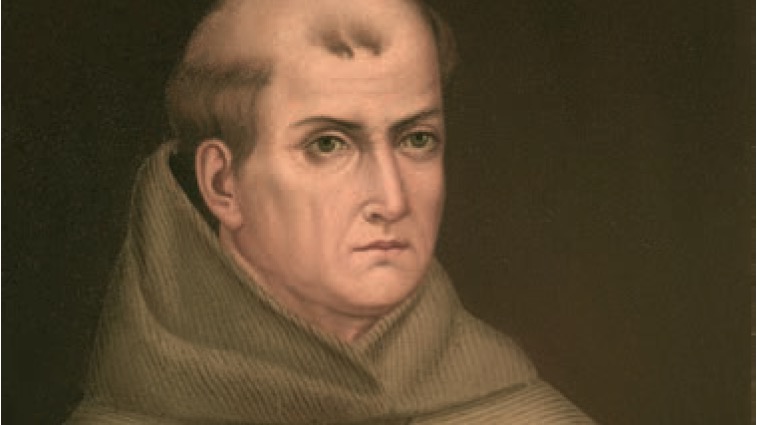Miguel Serra (1713-1784) was born off the Spanish coast on the island of Mallorca, baptized on the day of his birth in 1713 because his two older siblings hadn’t survived childhood. When he was 15 years old, Miguel decided to begin priestly studies and wanted to become a Franciscan. He wasn’t accepted at first because of his age and sickly nature, but his second try was successful and he embarked on a vocation that would last more than half a century.
The young Franciscan excelled in the spiritual practices of the order by his first vows in 1731 — taking the name Junipero after a companion of St. Francis himself. Missionary zeal got into his blood early when he read about the brave South American missionary St. Francis Solanus, who had been recently canonized. Little did St. Junipero Serra know that he would go on to evangelize western North America and become the first canonized American saint of Hispanic origin.
Before turning 30, Serra quickly became known for his intellectual gifts and was appointed a philosophy professor. His success in religious life and the academy did not keep Serra from following his heart’s truest calling, and he asked his superior for permission to travel to North America to evangelize the natives in 1748. Abandoning his promising academic career, Serra set out from Mallorca for the first and last time.
Serra and his brother friars arrived in New Spain in December 1749 after a few weeks in Puerto Rico. They were destined for Mexico City — capital of the future Mexico — travelling nearly 275 miles by foot to get there, as Franciscans didn’t allow travel by horseback. During the journey, an insect bite caused a leg infection that dogged Serra until he died.
In Mexico City, Serra didn’t settle for long into the College of San Fernando, a Franciscan school for training New World missionaries, before he volunteered to oversee different missions. Responding generously and lovingly to the needs of the poor and vulnerable in his charge, Serra began to garner a reputation as an advocate for the natives in the face of the government of New Spain. Serra became presidente of the missions in California after King Charles III expelled the Jesuits from all Spanish territories. Starting in 1769, Serra was responsible for building a network of missions in modern-day California that supported the natives in developing a variety of skills, but their main purpose was to spread the Gospel.
He established his headquarters midway up the California coast at Mission San Carlos Borromeo in Carmel, and began receiving natives into the Church. Conversion was not demanded of them, but ample preparation was required if they chose to convert.
An outspoken defender of the natives’ human rights, Serra fearlessly called out the government for their widespread physical and sexual abuse and denounced the death penalty. As the tensions increased, Serra decided to make a trip to Mexico City to promote a mission that desired salvation of souls over domination and conquest. During his visit with the king’s viceroy of New Spain, Serra presented rules that served as the basis for the first major laws of California. Serra returned to California in 1774.
The political battles wore on. Serra continued establishing missions and served as minister of the Sacrament of Confirmation throughout the missions. At 70, he was worn out from a life spent in service to the Gospel. On Aug. 28, 1784, Serra died a happy death at the Carmel Mission.
St. Junipero Serra’s missionary zeal leaves a lasting and relevant example for all Catholics. At his canonization, Pope Francis described Serra as the personification of “a Church which goes forth,” “who testified to the joy of the Gospel in these lands” under the motto “Keep moving forward.” Francis concluded his canonization homily by stirring us out of our complacency so that with Serra we may “be able to say: Forward! Let’s keep moving forward!”
His feast day is July 1.
Michael R. Heinlein is editor of Simply Catholic. Follow him on Twitter @HeinleinMichael.

